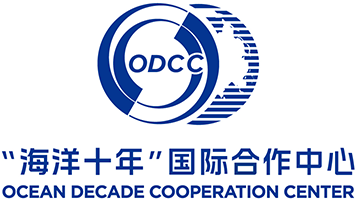

Wu Lixin, Academician of Chinese Academy of Sciences, said when he attended the cutting-edge lecture at the College of Global Change and Earth System Science of Beijing Normal University, that every breakthrough in marine science is dependent on technological advances, and today's marine science needs a revolution in new marine technologies.
He also mentioned that climate and the oceans are a super science encompasses almost all subjects.
Ocean is carbon sink, and heat sink as well. 86% of the evaporation of the global water cycle comes from the oceans, and 78% of the precipitation flows into the oceans. In this sense, the oceans have the control of global water cycle. Therefore, Wu Lixin believes that, to a large extent, the ability and level of predicting medium and long-term changes in the climate system depends on the observation, mechanism understanding and prediction ability of the huge thermal capacity and thermal transport capacity of the deep ocean.
Ocean observation is overriding important in studying the ocean. Major discoveries and scientific issues in marine scientific research, such as ocean circulation, mesoscale eddy, El Niño, etc., are often completed on the basis of long-term observation.
Ocean observation systems is composed of 4 complicated and expensive parts: underwater mobile platform, fixed platform, satellite observation platform, data integration and products. “Specially worth mentioning is the Arroy for Real-time Geostrophic 0ceanography (Argo)”, which in Wu Lixin's view is a revolutionary progress in the history of ocean observation. “For the first time, it allows scientists to know what is happening in the global ocean at depths above 2000 meters at their own offices.”
Argo has placed about 4,000 buoys around the world, and most of them are contributed by developed countries. Wu Lixin said: “China placed approximately 100 buoys which is not match with the status of China as a great power.”
Oceans cover 71% of the earth's surface, and 84% with a depth of more than 2,000 meters. However, the current Argo buoys can only observe 2,000 meters below sea level. So a second round of Argo is being planned internationally to expand to the deep sea below 2,000 meters.
What should China do with the new round deep-sea Argo observation program? Wu Lixin believes that this is not only a challenge, but also a rare opportunity for China's deep ocean research to achieve leapfrogging development and seize the commanding heights.
He proposed to develop intelligent buoys for the global deep ocean. Which needs to be facilitated with technologies of comprehensive quasi real-time marine environment observation below 2000 meters, dynamic positioning and sustainable marine environment energy power supply, adaptive regional three-dimensional high-resolution observation, and multi-disciplinary sensor synchronous observation technology based on mobile platform.
“Almost half of the buoys are out of operation due to lack of funding to repair and maintain. The buoys in the Western Pacific Warm Pool were originally placed and maintained by Japan, and are facing financial difficulties. What China needs do with this issue should be well thinking of and planned”, said by Wu Lixin.
An important task of ocean observation is to serve for forecasting. However, Wu Lixin admitted that due to the institutional mechanism and the loose linking between observation, mechanism and prediction, observation data lacks continuity, systematic and sharing. Meanwhile, key observation instruments are blocked by foreign countries, the science development and technology development are out of touch.
Therefore, Wu Lixin advises to carry out collaborative research to clarify the state, processes and changes of the ocean through complex observation and data prediction systems, making the ocean a "transparent ocean".
(Source: www.hellosea.net)